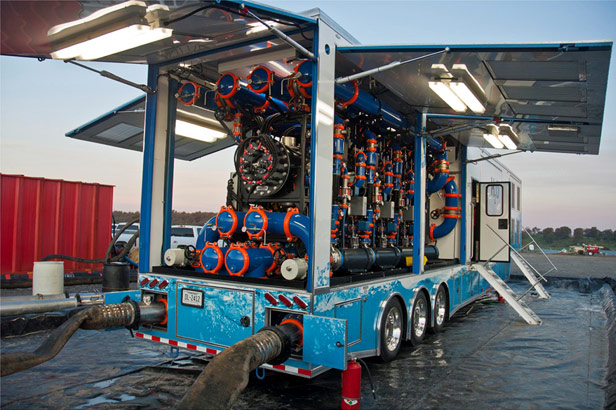The oil and natural-gas boom in the United States—driven by water-intensive hydraulic fracturing technology (see “Natural Gas Changes the Energy Map”)—is creating demand for better water-treatment technologies. Now Ecosphere Technologies has developed a process that is helping producers recycle water and eliminate the use of some of the chemicals involved in treating water for fracking.
Vast amounts of water are needed to fracture underground formations and release natural gas (see “Can Fracking Be Cleaned Up?”). A single well uses 15 million liters of water, and thousands of wells have been drilled or permitted in the United States. The sheer volume of water poses a problem in drought-stricken areas, such as the Eagleford shale deposits in Texas. The other problem is wastewater—10 to 50 percent of the water used for fracking flows back out again, and is contaminated with the chemical additives used in fracking as well as with salts, metals, and sometimes radioactive materials that the water picks up underground. In places such as Pennsylvania, there’s no easy way to dispose of this water, since the geology isn’t amenable to deep underground storage.
Ecosphere’s process replaces the biocides and descaling agents typically used in fracking water with an ozone-based treatment. Ozone itself isn’t benign, but Ecosphere produces it on site, so it doesn’t have to be transported, which reduces the chance of spills, the fuel needed for transport, and the wear and tear on roads—a major problem for communities with large fracking operations. The process lets well operators recycle water, reducing the total amount consumed and the amount of waste material that needs to be disposed of.
Don’t settle for half the story.
Get paywall-free access to technology news for the here and now.
